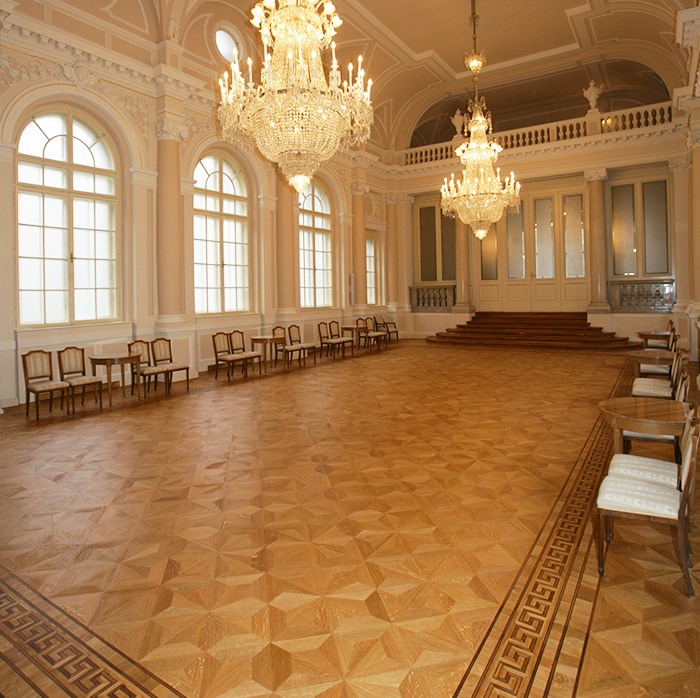The use of wood floors goes back to a few centuries. All the luxurious residences in Europe have wooden floors. From the 1st century A.D., through the court of King Louis XIV, the wood floor has become more and more popular. We talked earlier about the history of the wood floor, today the attention is devotes the history of the “parquet” in Europe.
The history of the “parquet” begins in North of Europe
During the 1st millennium A.D., the houses in Sweden and Finland were made of logs and the floors used to float as to protect them from the humidity. In these Countries, the most popular wood essences were Oak, Pine, Larch, and Fir. At the beginning just one wood type was used in the house, then more wood types were combined as to get different colours.
Further the spread of Christianity in Norway, between XI and XIV century, the first churches were built with wooden pavements installed with iron nails. With time, this kind of flooring improved more and more thanks to the technics developing.
Also in Saxony, but in all Europe as well, the houses used to be built with wood, almost. The wood floors have been developing with time, becoming precious thanks to handcraft working. One of the most beautiful examples is Belton House in Lincolnshire, UK.
In the early 1900 the “English floor style” spread out, it was made of long planks laying one close to each other. This kind of floor format, together with the Hungarian herringbone, became the most popular floor type, both for residential and big villas or castles of XX century.
The huge success of the wood in Italy and France
During the XIV century in Italy and especially in Tuscany the marquetry was very popular. It is a technique that has roots in Orient and it was used mostly for furniture. The artisans started to glue very thin sheets (veneer) together, of one or more wood types as to get geometries. The most famous inlay wooden floors dates from eighteenth century, they come from France and have the typical central medallion pattern.
The traditional French parquet used to lay on panels that were installed directly on the floor. The wooden boards had scraped edges in order to avoid that the natural movements of the wood to waste the planar surface. The boards were laid raw, then treated with wax or oil and covered by carpets to protect it. From the mid-1800s were introduced varnishes and shellac to finish the wood flooring.
The parquet from 1900s to today
Starting from the economic boom during the XX century, the wood mosaic became popular whose tiles were made of small strips, laying perpendicular to the next tile. During the 80s this kind of floor was popular again, with new sizes, finishes and geometries. The most important change is in that time it was manufactured on an industrial scale, as engineered and already painted.
The wood floor is nowadays much appreciated, both for domestic and contract uses. It’s a natural, warm, comfortable and welcoming material. It is not just for cover the flooring but it can be extended as wall cladding. Don’t miss the next articles on Corà Parquet Blog.





